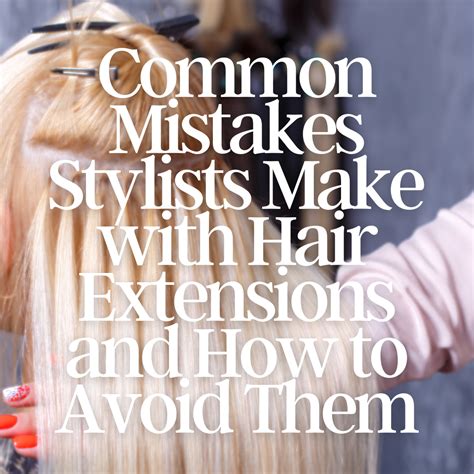Are you dreaming of luscious, flowing locks without breaking the bank? Look no further! We’ve compiled a comprehensive guide to inexpensive hair extensions that will transform your hair without emptying your wallet.

1. Synthetic Hair Extensions: Affordable and Versatile
Synthetic hair extensions are an excellent budget-friendly option, offering a wide range of styles and colors.
Pros:
- Low cost: Typically available for $20-$50 per pack
- Easy to style: Can be heat-styled like natural hair
- Durable: Lasts for several weeks with proper care
Cons:
- Less natural look: May not blend seamlessly with real hair
- Prone to tangling: Requires regular brushing and detangling
2. Clip-In Hair Extensions: Quick and Convenient
Clip-in hair extensions are easy to apply and remove, making them a convenient choice for special occasions or everyday wear.
Pros:
- Time-saving: Can be applied in minutes
- Reusable: Can be worn multiple times
- Versatile: Available in various lengths and textures
Cons:
- Potential for damage: Clips can snag natural hair if not applied carefully
- Limited thickness: May not provide significant volume
- Short lifespan: Lasts for around 6-8 weeks with proper care
3. Halo Hair Extensions: Effortless Glamour
Halo hair extensions are a lightweight and comfortable option that sits around the head like a crown.
Pros:
- Damage-free: No clips or glue required
- Effortless application: Takes only a few seconds to put on
- Subtle volume: Creates a seamless and natural look
Cons:
- Limited selection: Fewer styles and colors available
- May slip: Can move or shift if not secure
- Costly: Typically more expensive than other extension types
4. Fusion Hair Extensions: Long-Lasting and Discreet
Fusion hair extensions are bonded to natural hair using a heated keratin adhesive, resulting in a long-lasting and virtually undetectable look.
Pros:
- Durable: Can last for up to 6 months
- Natural blend: Bonds with natural hair for a seamless transition
- No damage: Eliminates the risk of traction or heat damage
Cons:
- Costly: Can range from $500-$1,500
- Time-consuming: Requires professional application and removal
- Maintenance required: Needs regular tightening and touch-ups
5. Tape-In Hair Extensions: Balanced and Cost-Effective
Tape-in hair extensions are a great compromise between affordability and longevity. They are attached using adhesive strips, making them easy to remove and reuse.
Pros:
- Relatively inexpensive: Typically $100-$300 per pack
- Long-lasting: Can last for up to 3 months
- Reusable: Can be reapplied 2-3 times
Cons:
- May irritate the scalp: Adhesive strips can cause redness or discomfort
- Not as discreet: Tape may be visible in certain hairstyles
- Requires maintenance: Needs regular tightening and removal
- Overloading your hair: Avoid adding too many extensions or using extensions that are too thick.
- Applying extensions too close to the root: This can create tension and damage natural hair.
- Using heat styling tools too often: Excessive heat can weaken synthetic hair and shorten its lifespan.
- Neglecting proper care: Regular brushing, detangling, and conditioning are essential for maintaining the health of your extensions.
- Enhance your confidence: Luscious locks can boost your self-esteem and empower you to feel your best.
- Experiment with new styles: Extensions allow you to try different hairstyles without committing to a permanent change.
- Protect your natural hair: By reducing the use of heat styling tools and chemical treatments, extensions can safeguard the health of your natural hair.
- Cover up hair loss: Extensions can conceal thinning areas or balding spots, restoring your hair’s fullness and volume.
| Type | Material | Cost | Pros | Cons |
|---|---|---|---|---|
| Synthetic | Polyester, nylon | $20-$50 | Affordable, versatile | Less natural appearance, prone to tangling |
| Clip-in | Remy human hair, synthetic | $30-$70 | Quick and convenient, reusable | Limited thickness, potential for damage |
| Halo | Remy human hair | $100-$200 | Effortless application, damage-free | Limited styles, may slip |
| Fusion | Remy human hair | $500-$1,500 | Durable, natural blend | Costly, time-consuming, required maintenance |
| Tape-in | Remy human hair | $100-$300 | Relatively inexpensive, long-lasting | May irritate scalp, visible tape |
| Pros | Cons |
|---|---|
| Affordable | Less natural appearance |
| Versatile | May not last as long |
| Easy to apply | May require maintenance |
| Damage-free | Can be uncomfortable |
| Reusable | May slip |
| Type | Cost |
|---|---|
| Synthetic | $20-$50 per pack |
| Clip-in | $30-$70 per pack |
| Halo | $100-$200 |
| Fusion | $500-$1,500 |
| Tape-in | $100-$300 |
| Considerations | Tips |
|---|---|
| Quality | Look for Remy human hair or high-quality synthetic fibers. |
| Color | Match the extensions to your natural hair color or experiment with highlights and lowlights. |
| Length | Choose extensions that are slightly longer than your natural hair for a seamless blend. |
| Texture | Consider the texture of your natural hair and choose extensions that complement it. |
| Application | Choose an extension type that suits your lifestyle and hair care routine. |
